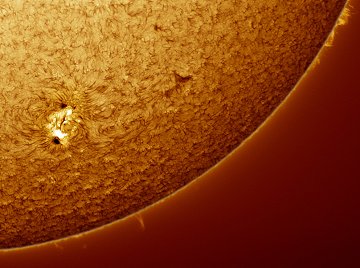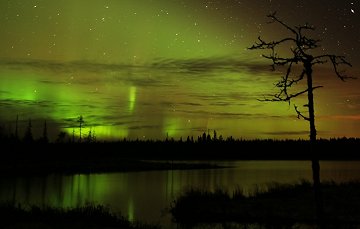 Autumn is here, and it's a wonderful time for stargazing. Find out what's up from Spaceweather PHONE.
Autumn is here, and it's a wonderful time for stargazing. Find out what's up from Spaceweather PHONE.
WEEKEND METEORS: Earth ran into a cloud of dust from Halley's Comet on Saturday, Oct. 21st, causing a mild but pretty display of meteors. Click here to see--and hear--the 2006 Orionid meteor shower.
BIG SUNSPOT: "What a weekend!" says Cameran Ashraf of Claremont, California. "I watched the incredible Orionid meteor shower from a dark desert sky, got to show the heavens to a group of people who had never stargazed before, and then came home to find a big spot growing on the sun." He took this picture using his Coronado SolarMax60:

This is sunspot 917. A few days ago it was just a speck; now it is wider than the planet Neptune. The active region is crackling with minor solar flares, and if its rapid growth continues it could soon pose a threat for stronger explosions.
more images: from John C McConnell of Maghaberry, Northern Ireland; from Larry Alvarez of Flower Mound, Texas; from John Stetson of Falmouth, Maine;
AURORA WATCH: A stream of high-speed solar wind hit Earth on Oct. 20th. The impact did not cause an outright geomagnetic storm, but it was enough to spark auroras for two consecutive nights in Scandinavia and Iceland. Tuomas Sydanmetsa took this picture from Pyhanta, Finland, on Oct. 21st:

The solar wind is subsiding now, dimming the auroras. An eruption from sunspot 917 could stir them up again. Stay tuned!
October 2006 Aurora Gallery

